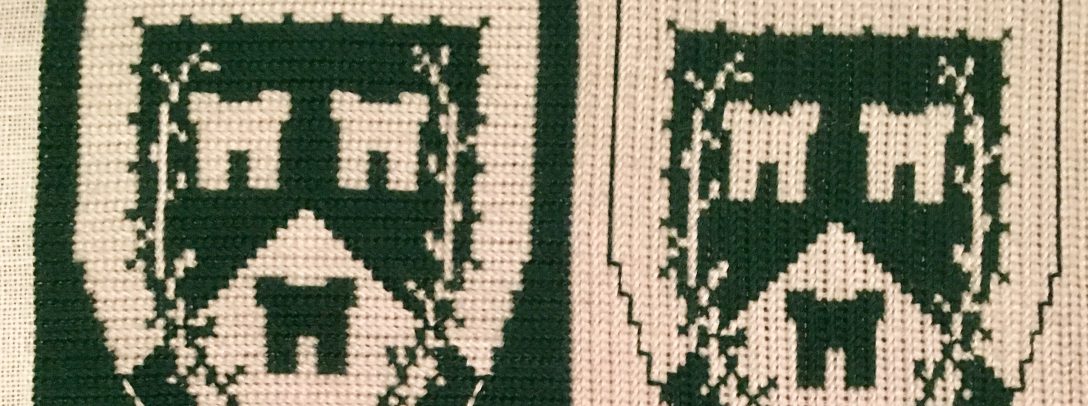While my main embroidery interest tends towards late 16th-century English work, I wanted to try something different this year. In an attempt to better understand these Tudor pieces, I wanted to dig further back into the past to explore the embroidered ancestors of these works. I also wanted to put together a major research and embroidery project for the Crown’s and Queen’s A&S competition this year, which I used as a convenient excuse to delve down this new rabbit hole.
This search led me to the alluring world of Opus Anglicanum, the pinnacle of embroidery excellence in Medieval England, which flourished from c. 1250 to c. 1350. I’ll be discussing the details of my own recreation of an Opus Anglicanum piece in the next several blog posts, beginning today with a brief history of the style.
Opus Anglicanum, which is Latin for “English work,” was highly sought-after by monarchs and clergymen alike, both in England and throughout continental Europe. Kings might commission one of these stunning pieces as a gift to a pope or cardinal. In fact, these works were so highly sought-after that there was a booming market for second-hand Opus pieces in Europe.

British Chasuble from the Metropolitan Museum of Art
Although these elaborate works of art required a high degree or professional skill and several years to complete, during that “golden age” century of 1250-1350, embroiderers primarily used only two different stitches: split stitch for the colored silks and underside couching for the gold threads. I’ll go into much great detail about the specifics of these techniques in a future post, but suffice it to say for now that “simple” does not mean “easy!”

Detail of split stitch and underside couching from an orphrey fragment at the Metropolitan Museum of Art
Opus Anglicanum was reserved for ecclesiastical pieces – vestments, altar frontals, and burses, rather than royal robes or decorations, due to its extremely time-intensive nature. Royal embroidery workshops had to churn out pieces much more quickly, to suit the changing needs of royal taste – a concern that ecclesiastical embroiderers did not have to worry about.
Ironically, many written records of royal embroideries have survived in the form of receipts, inventories, and wills, yet almost none of these works have survived. This is because many of these pieces were either reworked or “scavenged” for precious jewels and metals to be used for the next king or queen. These pieces were also used with greater frequency, and therefore had the potential to wear out. The reverse is true of Opus Anglicanum – several stunning examples of this style survive, yet we have very few written records to tell us about their construction. These pieces were passed down through generations of clergy, and since they were used only during certain parts of the church calendar, depending on their iconography (such as Advent- or Eastertide-themed scenes), they were not subject to such rigorous wear and tear.
For the most part, Opus Anglicanum pieces feature either Biblical figures or saints, although due to the vanity of some patrons, the occasional heraldic device did creep into some designs. Saints were often shown standing, while other characters could be shown seated. The cope was a large semi-circular garment that was worn during processions, while the chasuble was was a slightly smaller tabard-like garment that was worn during the Eucharist. Chasubles primarily contained images of the Crucifixion, to illustrate the meaning of the act of communion.
After the mid-14th century, embroiderers began using less time-intensive embroidery techniques to produce similar, but not identical results. For example, surface couching replaced underside couching when working with gold threads, and satin stitch and long-and-short stitch began to replace the more time-consuming split stitch. Historians refer to this as the “decline” of Opus Anglicanum, although many works made during this period also show great skill and workmanship.

A rondel from the St. Martin embroideries at the Cloisters Metropolitan Museum of Art, a 15th century piece from the Netherlands. This piece clearly shows the surface couching and long-and-short stitch
In my next post, I’ll talk about the design inspiration behind my own attempt at recreating an Opus Anglicanum piece!
